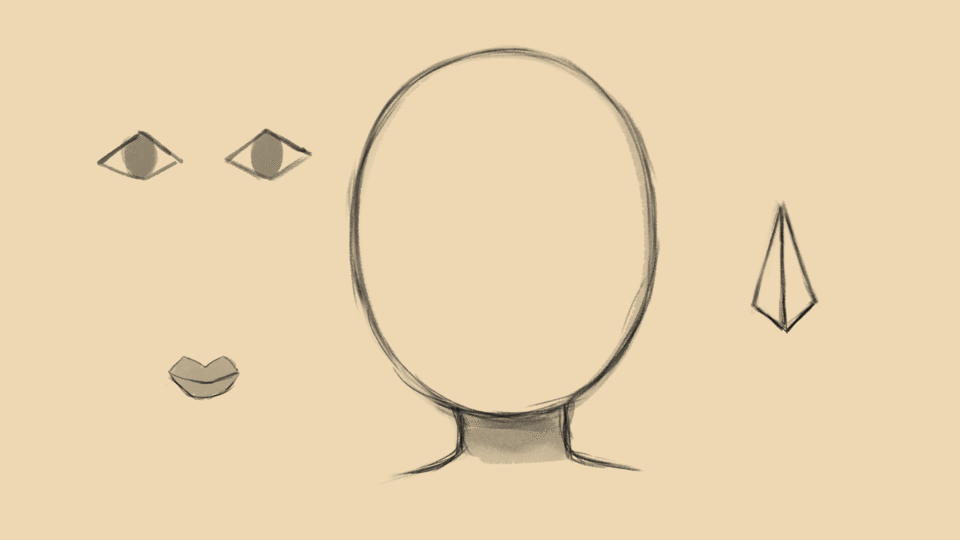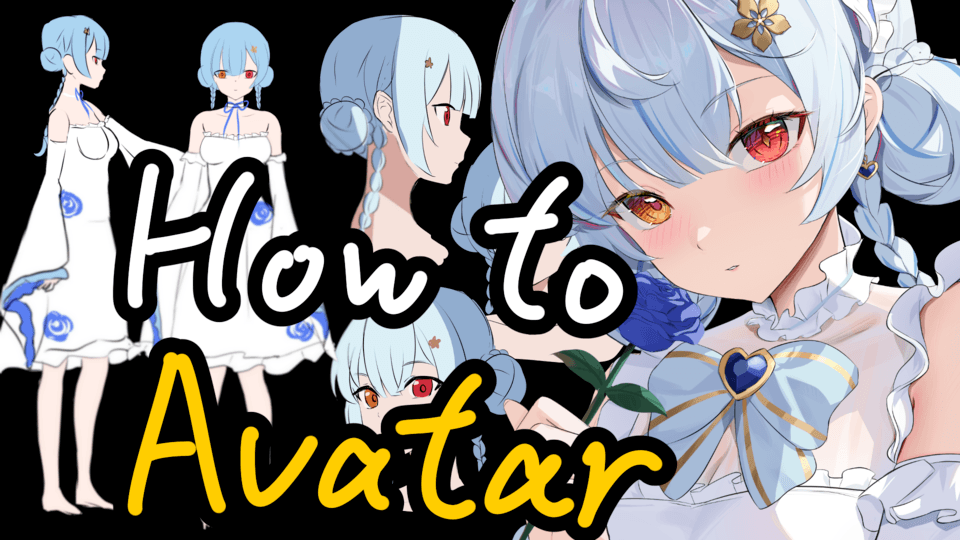Thinking about form of the face
Intro
I remember starting to draw and thinking, “well, I see faces everyday, so I can just recover from my mind how they look like and draw one”. But it never looked right, so I had to learn more about faces. Every time I learned a bit more about the subject, I got caught off guard by how much my perception of a face looks differs from what a face actually is. Quite a mind game!
Face
The face is the front of animal head, featuring eyes, a nose, and a mouth. It is especially very important for humans. We read expressions from faces to identify emotions to communicate with each other. Your face is unique, and it is where a person looks when communicating. Sometimes we even perceive faces in places where there are no faces at all. So, faces are extremely important to us, and we pay a lot of attention to them.
[Pic 1. Faces. ]
The main components of a face are the head, eyes, nose and mouth. Let us define a head shape, and some facial features as shown below in a Gif 0. Here, the head is shaped as an oval, eyes as a rhombus, nose as a triangular pyramid, and the lips… are kind of heart shaped.

[Gif 0. Face features]
Now if you look at Gif 1, you will see placing those features on a face. Cool! We have a face now! But how will you draw this face at a different angle?

[Gif 1. Placing facial features]
Character designs have variety of conventions for how they draw faces at different angles (as shown in Gif 2). Some styles are very limited in what angles of faces are displayed. For example, in “Peanuts” by Charles M. Shultz, faces are either in profile or in 3/4 (or front, it’s hard to tell). Yet the faces are likely to be based on certain form beneath them. So let’s define a form of a head for our face from above.

[Gif 2. Face styles. Stickman, “Peanuts”, anime and realistic styles. ]
Form
(Form is one of the elements of visual art. It is a the way that a shape or physical configuration occupies space. Another way to say it, is that a form is 3D shape in 3D world. From viewing the form of an object you can perceive its volume, shape, plane directions, and how much space (in 3D) it occupies. You can draw mesh around object to indicate its form, or render light to observe its form. There are many other methods to display form, but the end goal to define how it occupies 3D space.)
We define the head as an ellipsoid and neck in a shape of a tube. As shown below, Pic 1 stage A. Now we need to pick where will our facial features sit (eyes, nose, and mouth). So, we will mark with red lines to identify where our facial features will sit, as shown on a Pic 1 stage B. Since we want the face to follow the form, we need to curve the red lines along the ellipsoid. Next is placing the facial features on the form, following red curves, as shown Pic 1 stage C. Lastly, drawing a contour of the head, Pic 1 stage D. Now we have a face placed on an ellipsoid.
[Pic 1. Drawing face form by steps. A-indicating form of a head, B-marking place for facial features, C-drawing facial features along marked line, D-drawing a contour]
To draw this face at different angles with this form, we need get accustomed with perspective, rotate the form, and place facial features according to perspective. This is shown in Gif 3, which follows the same steps as described above but over a rotated head form.

[Gif 3. Facial forms at different angles. A-indicating form of a head, B-marking places for facial features, C-drawing facial features along marked line, D-drawing a contour cover it]
This overly simplified ellipsoid form could define a face design. However, it is certainly better to know more. My face and your face sit not on an ellipsoid. The form of our heads is a lot more complex. But we can start with some basics about our anatomy.
Skull
What form does our head have? Well, what is left of your head after removing all soft tissues of it? Skull! Yay! Skull is the rigid part of our head. It protects our brain. It impacts our facial features a lot, as our face, muscles, cartilage, etc,. All sit on it. The anatomy of a skull and its form is very complicated. If only in one tutorial we could know all about its form, shape, anatomy. Here we will just fixate on basics of a skull, two big components of it: cranium and jaw.
The cranium is the bone component of a skull that encloses the brain (not including bones of the face). The jaw bone (mandible) is the only movable part of our skull. Below in Pic 2 we see a study of a skull.
[Pic 2. Skull study]
From looking at the cranium, the closest simple form to it is that of a sphere. But to better represent a cranium we have to cut the sides of the sphere, as we can observe that a cranium is a flat on its sides (plane where are ears located). Below in Gif 4, on the right we see a simplified representation of the cranium as a sphere where the sides are cut off.
Now a jaw bone, or mandible, has a shape that is a bit tougher to explain. From a bottom view, it resembles a horseshoe, and from the side we see this “L” shape. It meets the simplified form of a cranium at the bottom of a cut out.

[Gif 4. Simplifying skull.]
You can find 3D shapes of skulls online, or variety of pictures of skulls. I think it would be pretty cool to have a skull at home to study from. Observe whatever is available to you, look at the planes and form, think how would you represent the skull.
One thing to note as well is that skulls are different between people. Some will have a taller forehead, some will have wider cheekbones, some will have a longer chin. Try to study skulls and draw them at different angles to see if you grasp the form well enough.

[Gif 5. Practicing drawing skulls]
After that you can try fitting face on your skull, and see how skull impacts our faces, as shown below.

[Gif 6. Practicing drawing face on top of a skull]
Is the skull the only thing that impacts our facial features? I wish! We also have muscles and cartilage on a face, which gives another level of an impact to how our face appears. Faces are complicated. Take your time to learn about them!
Lastly, just a recommendation is to look at the book “Drawing the head and hands” by Andrew Loomis. It contains the Loomis method of drawing head, which is based on skull form and simplifies placing facial landmarks.

Everything is drawn and animated in Clips Studio Paint.















コメント